Company advantages
Our certificate
Bonzer Pet quality management system has been certified by ISO9001:2000 and ISO9001:2008 as well as the national military standard GJB9001-2001A.
Competitive Price
We offering a higher-quality product or service at an equivalent price. As a result we have a growing and loyal customer base.
Customized Services
We understand that each customer has unique manufacturing needs. That's why we offer customization options to cater to your specific requirements.
24h Online Service
We try and respond to all concerns within 24 hours and our teams are always at your disposal in case of any emergencies.across borders.
What is Pet Harness
A Pet harness is a device consisting of strips of webbing that almost wrap around the animal's torso and are held together using side release buckles. These harnesses are usually made with straps over the chest in front of the forelimbs, and straps around the torso behind the forelimbs, with straps in between. They feature D-rings that fit on a leash and are most commonly used to restrain animals, but dogs also wear them specifically to assist people with disabilities or to lead people and objects.
Benefits of Pet Harness
Neck and Spine health
If you have a dog who is exuberant on his walks, he will be tugging on the leash which will, in turn, tug on his collar and his neck. A dog can injure his larynx and/or his neck and spine if he is tugging too hard on the leash.
It's harder to escape
A dog in a collar can easily wiggle out of it and run into danger or get lost. A dog in a well-fitted harness is safer from escape because it's harder to get out of a harness. Also, if your dog is trying to get out of her harness while you're on a walk, you will notice it, unlike if she gets out of her collar, it's a simple matter of her backing out of it and then she's gone.
A harness can help an older dog stand
If you have an older dog who is finding it harder and harder to get up or navigate steps, a harness will help you with leverage to help lift her to her feet or help her up and down the stairs. There are even harnesses you can buy that have handles on them to help you with an older dog or one struggling with mobility issues.
Walking made easier
When you walk a dog on a leash and with a collar who loves to tug and turns the walk into a “drag” for both of you, a harness is an ideal option. When your dog is in a harness his tugging forward isn't as much of a strain on you and your arm. You can more easily train your dog to “heel” or “walk nicely” when he is in a harness.
What are the Applications of Pet Harness
Dog Walking
The primary application, providing control and safety during regular walks, especially for strong pullers or energetic dogs.
Hiking and Outdoor Activities
Harnesses are ideal for outdoor adventures, offering better control and balance when traversing uneven terrain or when the pet needs to navigate obstacles.
Running and Biking
For pets that enjoy running alongside cyclists or joggers, a harness provides a safer connection point and helps maintain stability during vigorous exercise.
Service and Therapy Animals
Service dogs and therapy animals often wear harnesses that signify their role, allowing them to perform tasks safely and effectively.
Training and Behavior Modification
Specialized harnesses, such as no-pull or front-clip harnesses, are used in behavior training to manage and correct unwanted behaviors like pulling or jumping.
Types of Pet Harness
Back-clip Harness
This is likely the most common style, and the dog's leash will clip onto a ring located at the back of the harness. This could be located either on the neck or the spine area, or sometimes even both. These are great for small dogs and decrease pressure on the trachea. They're also comfortable and easy for your furry friend to wear, and decrease the chances of your dog's legs getting tangled up in a loose leash. However, if your dog is a puller, it means less control-the back-clip attachment of this type of harness makes it easier for your dog to pull.
Front-clip Harness
The leash for this type of harness clips to the front of the chest, giving you more control. If your dog tries to pull during a walk, the position of the ring means that it is difficult for it to do so.
Dual-clip Harness
Okay, there's a third type of harness-a combination of both of the above! This clips the leash to both the front and back of your dog and is used mostly by dog trainers.
Vest Harness
Vest harnesses are comfortable, secure, and come in a range of styles. They're often padded, which decreases the chances of chafing. They're an ideal option for smaller dogs and have clips in the front, back, or both.
Step-In Harness
The name refers to the way you'll put the harness on. Spread it onto the floor and let your pup step in, then pull both sides up around your dog's chest and clip to close. Most step-in harnesses utilize a back-clip.
Understanding the Importance of Pet Harness
Safety and control when out and about
Dog harnesses offer not only safety but also good control, especially for active pups. Vest harnesses do not pull your dog's throat and can discourage pulling behavior by distributing pulling force across the chest and back. Moreover, many feature reflective strips for greater visibility in low-light conditions.
Reducing pulling and tugging
Dog harnesses are designed to discourage pulling behavior. The front clip harnesses and no-pull dog harnesses turn your dog towards you every time they try to pull, making it a natural training mechanism. Remember, it's essential to pick the correct dog harness size for this!
Beneficial for dogs with medical conditions
Dog harnesses can also be beneficial for dogs with respiratory or throat problems. Harnesses made with soft and sturdy materials provide comfort and support for your pup while venturing into the great outdoors. A durable dog harness, such as a head strap or step-in harness, can provide the required support for your pup.
Components of Pet Harness
Fastening System
This typically includes buckles, straps, and sometimes clips. It's responsible for securing the harness around the pet's body. The fastening system must be durable and easy to use, allowing for quick attachment and release.
Neck Strap
Found at the top of the harness, this strap goes around the pet's neck. It should fit snugly but not be constricting. Some harnesses have a Y-shaped neck strap for added security.
Back Panel
The central section of the harness where the leash attaches. It spans from the neck strap to the chest and belly straps, creating a secure point of contact for the leash.
Chest Strap
Located below the neck strap, the chest strap crosses between the pet's front legs. It helps distribute the force more evenly across the chest and shoulders, reducing strain on the neck.
Padded Areas
Many harnesses include padding in areas that come into contact with the pet's skin, such as the neck, chest, and girth, to enhance comfort and prevent chafing.
Handle
Some harnesses feature a handle on the back panel, which allows the owner to lift the pet gently if necessary, such as when getting in and out of a vehicle.
Breastplate
In some harness designs, the back panel extends forward to cover the chest area, which can help prevent neck strain and provide additional control.
Different Breeds Have Different Needs When It Comes To Dog Harnesses
Small Breeds
Small dogs like Chihuahuas or Pomeranians often do well with back-clip harnesses as they're less likely to pull on their leash aggressively.
Large Breeds
Larger breeds like German Shepherds or Labradors that might be prone to pulling could benefit from front-clip or control harnesses.
Brachycephalic Breeds
Dogs with short noses like Bulldogs or Pugs should avoid neck pressure, making back-clip or vest harnesses ideal choices.
Pet Harness Features
Training Aid
Some harnesses are designed to encourage better walking manners. They can help train dogs to walk calmly without pulling, as pulling on the leash does not result in the same discomfort as it might with a collar.
Comfort for Pets
Properly fitted harnesses can be more comfortable for pets, particularly those with breathing issues or neck sensitivities.
Protection for Small Breeds
Small dogs and breeds with fragile necks benefit from harnesses, as they are less prone to injury during walks.
Preventing Jumping
Harnesses can discourage pets from jumping up on people or other animals, as it's more difficult for them to do so when wearing one.
How to Choose Pet Harness
The Size and Breed of Your Dog
The first factor to consider for dog harness sizing is the size and breed of your dog. Smaller breeds typically overheat easily so a vest harness made from a breathable material like mesh would be a good fit. On the other hand, larger breeds with more pulling force may need a durable dog harness like the strap harness. If your dog is a strong puller, such as a Husky or Boxer, look for a harness that discourages pulling behavior. An important factor to get the proper harness size is your dog's weight. Make sure you compare your dog's weight to the manufacturer's size guide to ensure a comfortable and safe harness for your pup.
The Comfort and Material of The Harness
Another factor to consider is the comfort and material of the harness. Padded harnesses tend to offer more comfort and less direct pressure on your dog's body. Materials also matter, with options ranging from nylon webbing to leather. Some harnesses feature reflective strips making them perfect for evening walks. It's crucial to remember that just because a harness is higher in price, it doesn't mean it's more comfortable for your dog.
The Adjustability and Ease of Use
Good control is also necessary when exploring harness attachments. The back clip harness is usually ideal for dogs who behave well on walks. If you have an active dog who loves to dart around, the front attachment harness provides more control. Furthermore, a handle attachment harness offers good control for dogs who jostle and pull, as it can secure your dog both in the car and on walks.
Reflectivity and Visibility for Night Walks
If you are into nighttime walks, the light conditions matter. Some dog harnesses are equipped with reflective strips that provide a safety feature for your dog in low-light conditions.
Caring for Your Dog's Harness
Once you've chosen the right harness, it's time to remember that care and maintenance for the harness are important to keep your dog comfortable and safe.
How to Maintain Pet Harness
Regular Cleaning: The Basics
Dirt, oils, and environmental pollutants can accumulate on a harness, leading to premature wear and potentially causing discomfort or skin issues for your dog. Regular cleaning is crucial and depends on the type of material your harness is made of.Nylon and Fabric Harnesses: These can often be machine washed in a gentle cycle with mild detergent. To protect both the harness and your washing machine, place the harness in a pillowcase or wash bag. Air dry the harness away from direct sunlight to prevent fading.
Inspecting for Wear and Tear
Regular inspection of the harness is crucial. Look for frayed edges, loose threads, or signs of chewing on fabric harnesses. For leather harnesses, check for cracks or stiff areas. Pay special attention to the buckles and D-rings as these are critical points that bear the most stress.
Storage Solutions
Proper storage of your dog's harness can extend its life. Keep it in a dry, cool place away from direct sunlight. Avoid storing the harness in a cramped space where it can get twisted or misshapen. If your dog doesn't use the harness daily, consider hanging it on a hook or placing it in a designated drawer.
Dealing with Odors
Dog harnesses can get smelly, particularly if they're frequently used in wet conditions or if your dog sweats a lot. Baking soda and vinegar can be effective in neutralizing odors. For fabric harnesses, a soak in a mixture of water and vinegar, followed by a thorough air drying, can do wonders. For leather, specialized leather deodorizers are recommended.
Managing Wet Harnesses
If the harness gets wet, it's important to dry it out properly to prevent mildew and maintain the integrity of the material. Pat down fabric harnesses with a towel and let them air dry. Leather harnesses should be dried slowly, away from heat sources, to prevent the leather from becoming brittle.
Regular Fit Checks and Adjustments
Your dog's size and shape can change over time due to growth, weight loss, or weight gain. Regularly check the fit of the harness and adjust it as necessary to ensure it's not too tight or too loose, which can lead to discomfort or escape.
Our factory
BONZERPET Was established in 2017. Our company is located in Hangzhou, two hours' drive from Shanghai and Ningbo port. Since then, We always specialize in producing all kinds of pet products. And we have achieved a rapid growth in pet business now.Our main products are included pet bed, pet clothes, pet toys and cat tree in our own factory. Now we have over 100 workers and 6000 square meters area. The production capability reaches 50pcs 40ft containers per month. On another way, we also do trade business of all kinds of other pet products. They are included pet collar & leashes, pet brushes, pet feeders, cat toys, small animal accessories, bird and fish accessories.
FAQ
Do vets recommend harnesses?
Harnesses are usually the best choice for walking dogs because they don't put pressure on the neck. But collars are generally more comfortable and have a place to hold an ID tag. You should use a harness and not a collar if you have a dog prone to breathing issues (like a pug).
Is it illegal to not leash your dog in Singapore?
Should dogs be leashed and muzzled? Pet owners are required by law to leash dog(s) in public places. Find out more information via our poster.While dog harnesses are designed with comfort in mind, wearing them continuously can cause problems. One of the main issues is chafing or rubbing. If a dog harness is left on 24/7, it can rub against your dog's skin and fur constantly, leading to discomfort or even sores.
Do dogs prefer collars or harnesses?
Your dog can escape either one if it's not snug enough. And whichever you choose, you'll need to double-check the fit. But some breeds of dogs, like toy breeds and flat-faced breeds, simply shouldn't use collars. And other dogs with a history of back, throat, or eye problems should use harnesses.
Why are Y shaped harnesses better?
The Y-Harness is designed for comfort.Some models will offer adjustability in both the neck and chest area. Durable snap locks make dressing even easier and some dog Y-harnesses can be put on without lifting the dog's front legs.It is true that some harnesses and equipment do not do anything to prevent your dog from pulling but none actually cause or encourage pulling. The only thing that creates pulling on leash or loose leash walking are consequences.
What is the safest type of harness for a dog?
The PetSafe Easy Walk Dog Harness gives the human holding the leash more control over their dog than any other harnesses we tested. The Martingale loop on the front—patented by PetSafe—will stop your canine from pulling and twisting which is essential when training.
What dog harness doesn t put pressure on neck?
Y-shape harnesses are designed for comfort, and to reduce pressure on a dog's neck and shoulders. The y-shaped design means that the strap at the front does not limit movement in the front legs. It's perfect for senior dogs, or those that have issues with their shoulders and necks, and need a little extra support.
Why does my dog still pull with a no-pull harness?
There may be many reasons why your dog is still pulling on their no-pull harness; whether it's because they're extremely excited to be out exploring the big wide world with you, they see another dog across the park that they're really determined to go say 'hey there friend!
What should I look for in a dog harness?
This is especially important for growing puppies! A good harness should be adjustable to accommodate your dog's growth and ensure a snug fit. Look for harnesses with adjustable straps around the neck and chest, as well as ones with multiple points of adjustment for a custom fit.In general, harnesses are easier on dogs than collars. For example, a good harness can alleviate back pain. They're also far less likely to pull on your dog's throat, causing injury. If you have a dog that loves to pull hard while walking, you'll want to consider a harness.
Is it OK for my dog to wear a harness all day?
While dog harnesses are designed with comfort in mind, wearing them continuously can cause problems. One of the main issues is chafing or rubbing. If a dog harness is left on 24/7, it can rub against your dog's skin and fur constantly, leading to discomfort or even sores.
When should a dog start wearing a harness?
8 weeks old
What age can you put a harness on a puppy? You can put a harness on a puppy from 8 weeks old. The same as you would with their collar. If this is going to be your preferred item for walking, or you have been advised to use a harness for their breed, then it is best to get them used to wearing a harness from early on.
Why are harnesses better for dogs?
Harnesses increase your control, prevent constant tugging and/or pulling, and are perfect for dogs with neck and oesophagus injuries. But just like dog collars, it's best not to leave them on your dog all the time.
What dog harness is best?
I love this question, and I've dedicated a lot of my time to it and created this list: 19 Best Dog Harnesses – Tried and Tested which is a growing list of everything that I've tested with my three dogs.But as a quick overview, firstly, consider shape. The harness should be y-shaped to allow for optimum freedom of movement. The harness should be comfortable and not cause chafing, it should also be able to fit correctly and have adequate flexibility to allow for a correct fit.
What dog harness is best to stop pulling?
Firstly, it's never the equipments' job to teach your dog, it needs to be a trained effort. However, a “Two point” harness, aka a harness that has both chest and back attachment points are my favourite for teaching a dog to stop pulling. They give fantastic control and I'd thoroughly recommend them!
What dog harness is the most comfortable?
Comfort is one of the number 1 things I've considered when creating the Best Dog Harnesses 2022. Comfort has to come first, which is why there are no “front strap” harnesses in there, they're all y-shaped and enable your dog to move freely!
What dog harnesses are crash tested?
Sleepypod and Kurgo Impact are two I know off the top of my head. I'll be creating a list of crash tested harnesses in the near future.
What dog harnesses are made in the USA?
There are several manufacturers who keep their factories and supplies in the US, but they do tend to be smaller designers. Brands like Tactipup, Modern Icon and Landshark are made in the US – but I'll make a shortlist for this.
What dog harness does the military use?
Whilst I've yet to find the actual brand, they use “Tactical” harnesses. Which are harnesses that are are longer, contain more material (typically) to guard the body. They're designed primarily to protect your dog and for hard terrain. They often come with the flexibility to implement the MOLLE system often used in the military, and likely have some level of stab deterrence in them.
What dog harnesses do the Police use?
The police tend to use “Tactical” Harnesses. I think the ones provided to the police are from Ray Allen Manufacturing – I'll check with them and confirm.
How should a dog harness fit?
Not too tight and not too loose. The rule of thumb is that you should be able to fit two fingers between your dog at all points, focus it on the ‘tight' points, like just above the spine, on the chest bone and by the neck.
Are dog harnesses machine washable?
Most are, yes. I've only found one that says it's not (the Ruffwear Flagline) – but I washed it anyway and it's come out fine so far! But always check the instructions, it can also be really useful to pop it in a pillow case when you're washing to stop it clunking around in your machine.
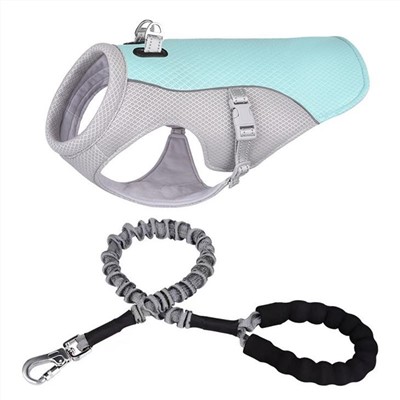
Breathable cooling pet cooling suit heatstroke vest cooling suit Amazon pet clothing heatstroke cooling dog clothing
Read More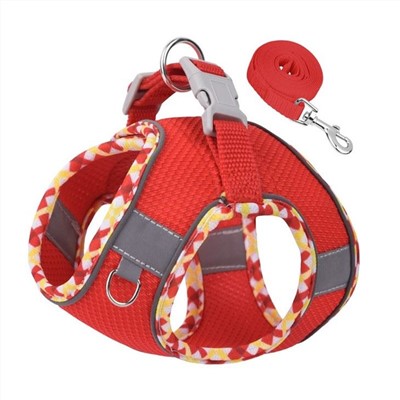
Amazon New Pet Chest Strap Reflective Plaid Wrapped Dog Traction Rope Small and Medium Tank Top Dog Rope
Read More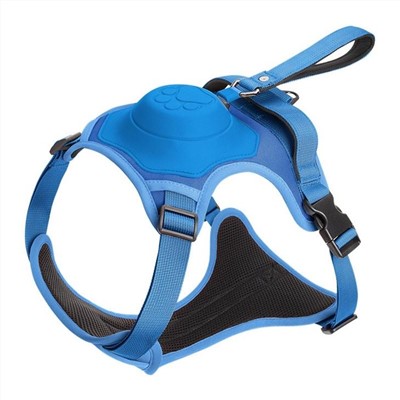
Popular Pet Products: Dog Vest, Traction Rope, Chest and Back Integrated Automatic Telescopic, Explosion-proof Impact Traction Rope, New Product
Read More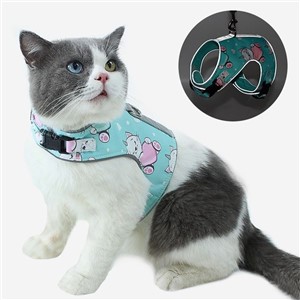
Step in Dog Chest strap and Leash Set, adjustable reflective no-pull Dog chest strap set with bow collar, leash and poop bag holder
Read More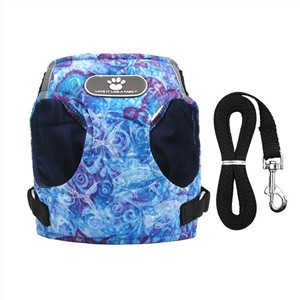
Tactical dog chest strap No pull, Reflective dog chest strap, Tactical dog vest, with Molle & rugged handle, front belt clip, breathable reflective dog chest strap for training walks
Read More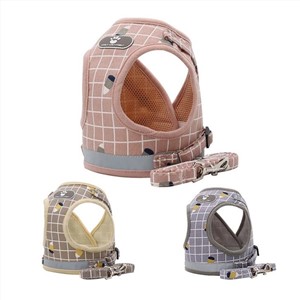
Dog chest strap: Prevents pulling and choking -Martingale front clip - Chest strap helps train dog leash - strong nylon, quick release, easy to fit - small, medium and large breeds
Read More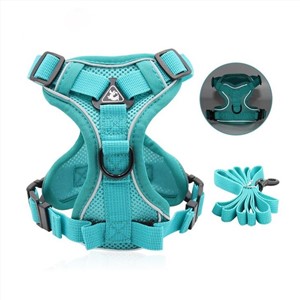
Dog chest strap: Prevents pulling and choking -Martingale front clip - Chest strap helps train dog leash - strong nylon, quick release, easy to fit - small, medium and large breeds
Read More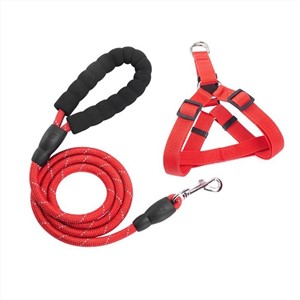
PetSafe Easy Walk No Pull Dog harness: Prevents pulling and choking -Martingale front clip - Chest strap helps train dog leash - strong nylon, quick release, Easy to fit - small, medium and large breeds
Read More